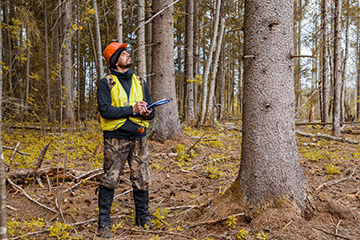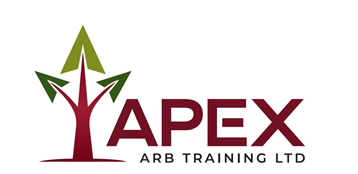Select tab
About
Upon completion, Learners will gain a deeper understanding of the biological and structural complexities of trees, improving their ability to conduct formal inspections, to make appropriate management recommendations or options, and to communicate findings effectively.
The course supports career development in sectors like urban forestry, landscaping, and ecological consultancy as well as supporting the arborists wanting to competently and confidently perform survey's and inspections to the National Tree Safety Group (NTSG) Formal Procedure standard.
The finer details
The course compromises classroom based theory, practical demonstrations and tasks.
Who should attend?
This course is for you if you need to become proficient in safely conducting surveyors and inspections in line with the NTSG Formal Procedure.
The Formal Tree Assessment training course is designed for arboriculture professionals, highways personnel, utility arborists, grounds maintenance and other relevant professionals responsible for assessing tree health and safety.
Learners should have the ability to communicate effectively in both written and spoken English, as this is essential for completing the assessment and understanding course content. This ensures Learners can fully engage with the course material and demonstrate the required competencies during assessment.
What will be covered?
At the end of this course the Learner should be able to:
- Understand the role and responsibilities of a Formal Tree Assessor, including collaboration with other surveyor/inspector roles and adherence to legal, contractual, and professional standards.
- Plan and prepare for assessments by defining assessment areas, select appropriate methodologies, and ensure compliance with site-specific requirements and objectives.
- Apply best practices for health and safety, including the correct use of Personal Protective Equipment (PPE), lone working protocols, and biosecurity measures to minimise risk to self and the environment.
- Assess tree health and structural integrity, recognise physiological defects, fungal activity, pests and diseases, and understand their implications for tree stability.
- Conduct structured risk assessments to evaluate tree hazards, determine risk levels, and recommend appropriate remedial actions based on target evaluation and site context.
- Use assessment equipment competently and accurately measure tree dimensions, geometry, and other essential attributes required for effective data collection.
- Carry out and distinguish between different types of assessments, including Visual Tree Assessment (VTA), informal and formal assessments and detailed inspections, knowing when escalation to a higher level is necessary.
- Record, interpret, and present assessment data in a clear, professional format; ensure data is stored for future retrieval and that re-assessment cycles are understood and you recommend appropriate schedules. This shall also include recording suitable justification for retaining unusual or valuable features.
- Make balanced judgements on tree management options, indicating a preferred recommendation.
As you'll appreciate, this course contains some practical activity that will require a minimum level of fitness. If you have any concerns, please speak to the Provider.
Other areas of interest
- Basic Tree Inspection
- Fungi
- Highways Tree Inspection
- Professional Tree Inspection
- Utility Tree Inspection
Courses
| Date | Location | Provider | |
|---|---|---|---|
| 17/12/2025 | Apex Arb Training | ||
| 15/01/2026 | Apex Arb Training |
Search for providers near you
If there are no suitable courses listed above, please fill in the details below and this will display a list of other course providers who also deliver this course.




